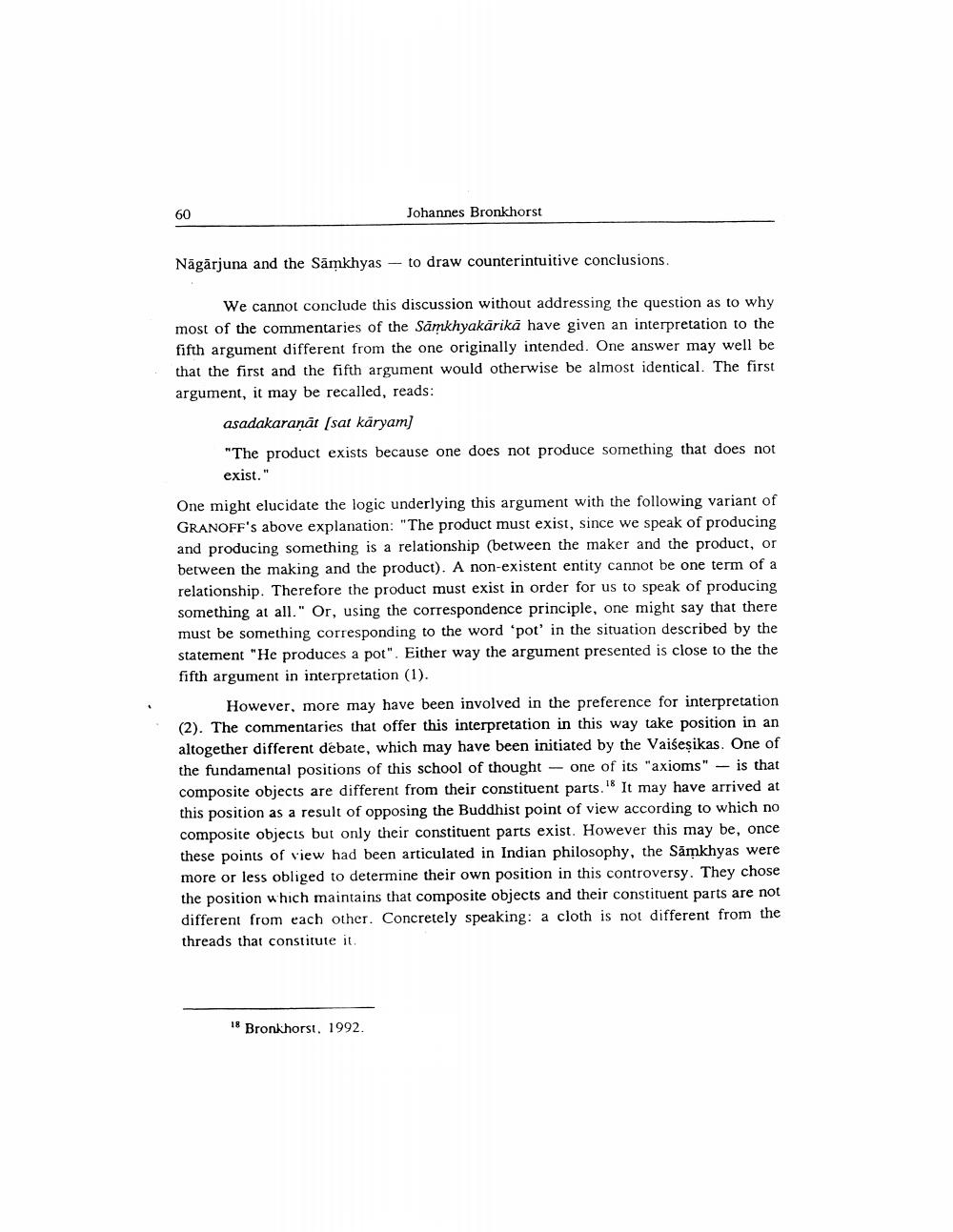________________
60
Johannes Bronkhorst
Nāgārjuna and the Sāmkhyas - to draw counterintuitive conclusions.
We cannot conclude this discussion without addressing the question as to why most of the commentaries of the Samkhyakārikā have given an interpretation to the fifth argument different from the one originally intended. One answer may well be that the first and the fifth argument would otherwise be almost identical. The first argument, it may be recalled, reads:
asadakaranāt (sat karyam]
"The product exists because one does not produce something that does not exist."
One might elucidate the logic underlying this argument with the following variant of GRANOFF's above explanation: "The product must exist, since we speak of producing and producing something is a relationship (between the maker and the product, or between the making and the product). A non-existent entity cannot be one term of a relationship. Therefore the product must exist in order for us to speak of producing something at all." Or, using the correspondence principle, one might say that there must be something corresponding to the word 'pot' in the situation described by the statement "He produces a pot". Either way the argument presented is close to the the fifth argument in interpretation (1).
However, more may have been involved in the preference for interpretation (2). The commentaries that offer this interpretation in this way take position in an altogether different debate, which may have been initiated by the Vaiśeşikas. One of the fundamental positions of this school of thought - one of its "axioms" - is that composite objects are different from their constituent parts. It may have arrived at this position as a result of opposing the Buddhist point of view according to which no composite objects but only their constituent parts exist. However this may be, once these points of view had been articulated in Indian philosophy, the Samkhyas were more or less obliged to determine their own position in this controversy. They chose the position which maintains that composite objects and their constituent parts are not different from each other. Concretely speaking: a cloth is not different from the threads that constitute it.
18 Bronkhorst, 1992.




